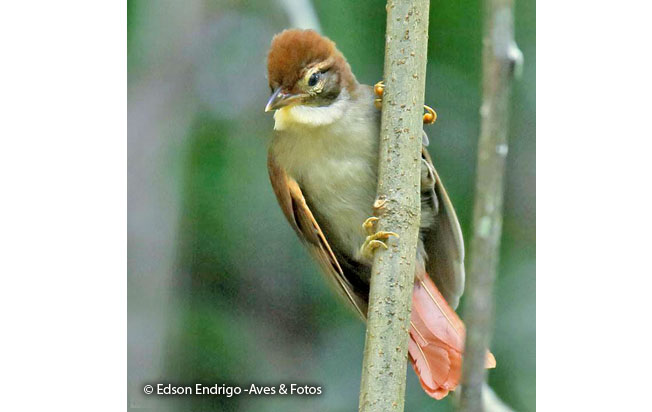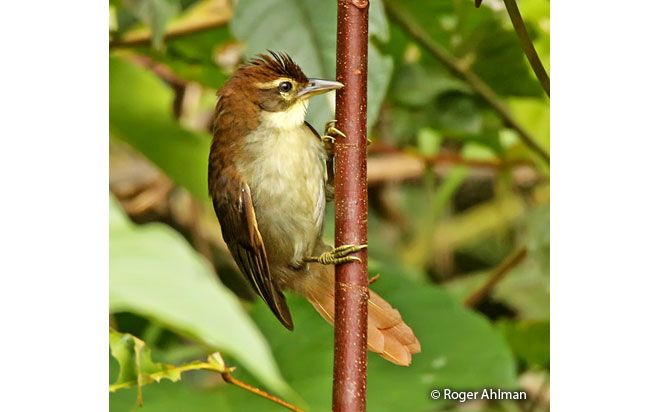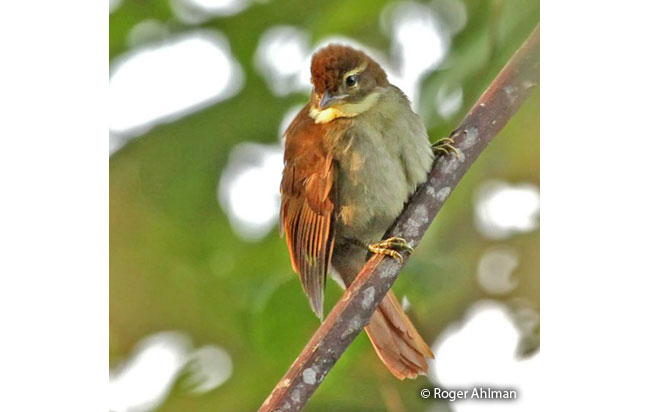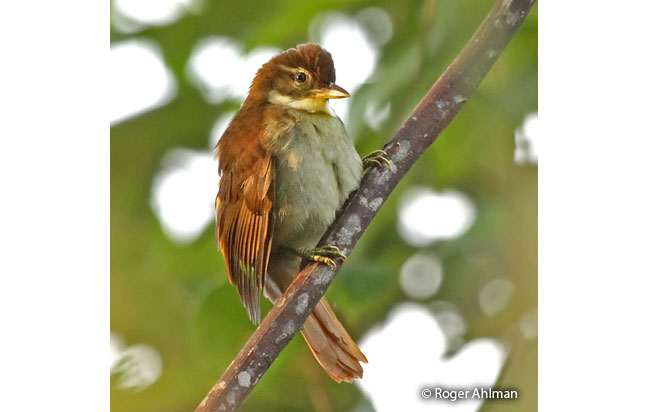Order: Passeriformes | Family: Furnariidae | IUCN Status: Least Concern

Age: Adult | Sex: Unknown | Loc. Alta Floresta, Brazil

Age: Adult | Sex: Unknown | Loc. Zamora-Chinchipe, Ecuador

Age: Adult | Sex: Unknown | Loc. Zamora-Chinchipe, Ecuador

Age: Adult | Sex: Unknown | Loc. Zamora-Chinchipe, Ecuador
Status: The Dusky-cheeked Foliage-gleaner is uncommon to rare and local along the foothill of the Andes and adjacent Amazonian lowlands. Its range extends farther towards the lowlands in southeastern Peru. It ranges to elevations of up to 1350 m along the east slope of the Andes. The Dusky-cheeked Foliage-gleaner also occurs in Co, Ec, Br, and Bo.
Name in Spanish: Hoja-Rasquero de Mejilla Oscura.
Sub-species: Dusky-cheeked Foliage-gleaner (Anabazenops dorsalis), (P. L. Sclater and Salvin), 1880.
Meaning of Name: Anabazenops: Composed word of two genera. Genus Anabates Temminck, 1820, spinetail; genus Xenops, Illiger, 1811. dorsalis: L. dorsum= back, dorsalis= dorsal, of the back.

Voice
References:
-
- Species range based on: Schulenberg, T. S., D. F. Stotz, and L. Rico. 2006. Distribution maps of the birds of Peru, version 1.0. Environment, Culture & Conservation (ECCo). The Field Museum. http://fm2.fieldmuseum.org/uw_test/birdsofperu on 03/01/2017.